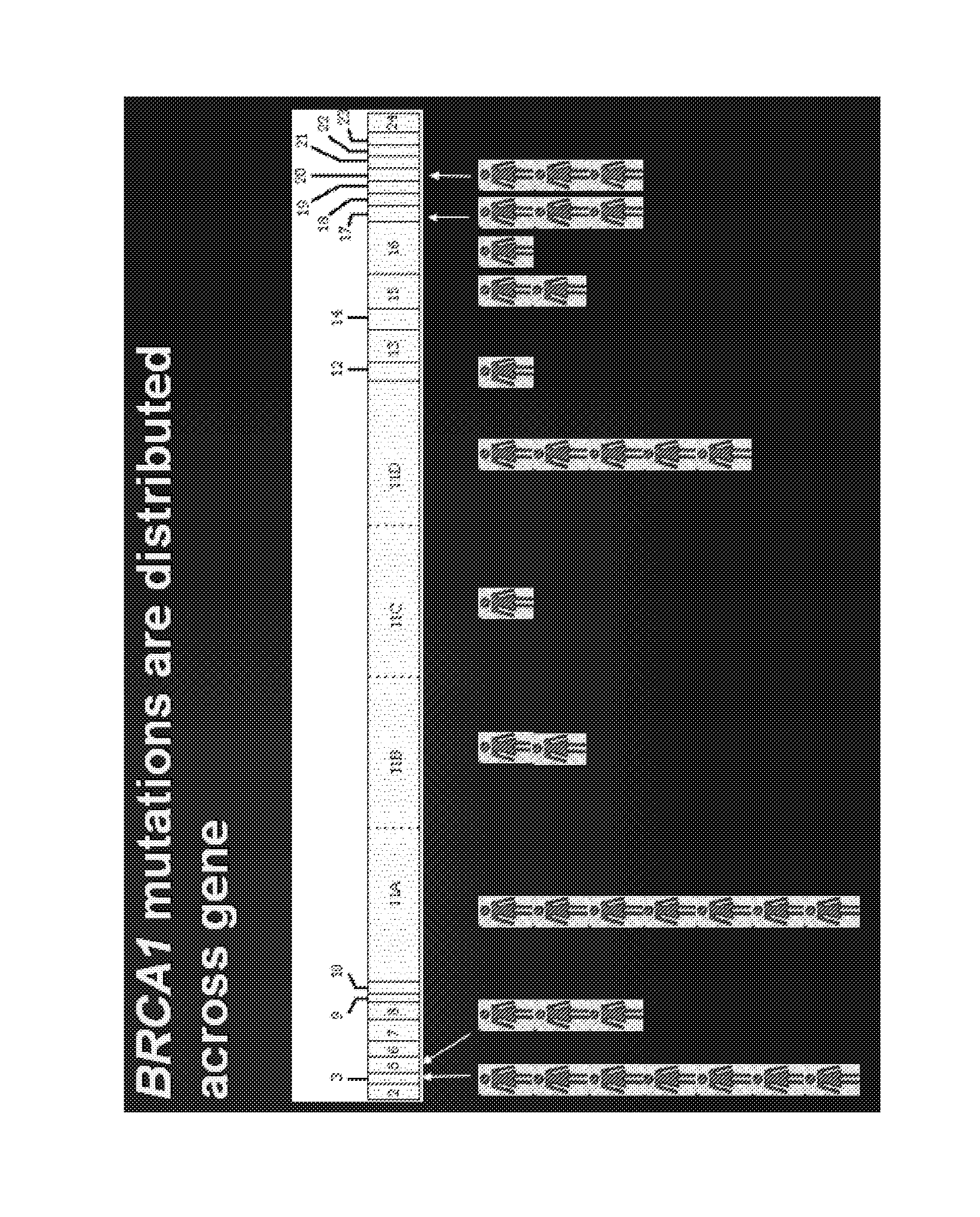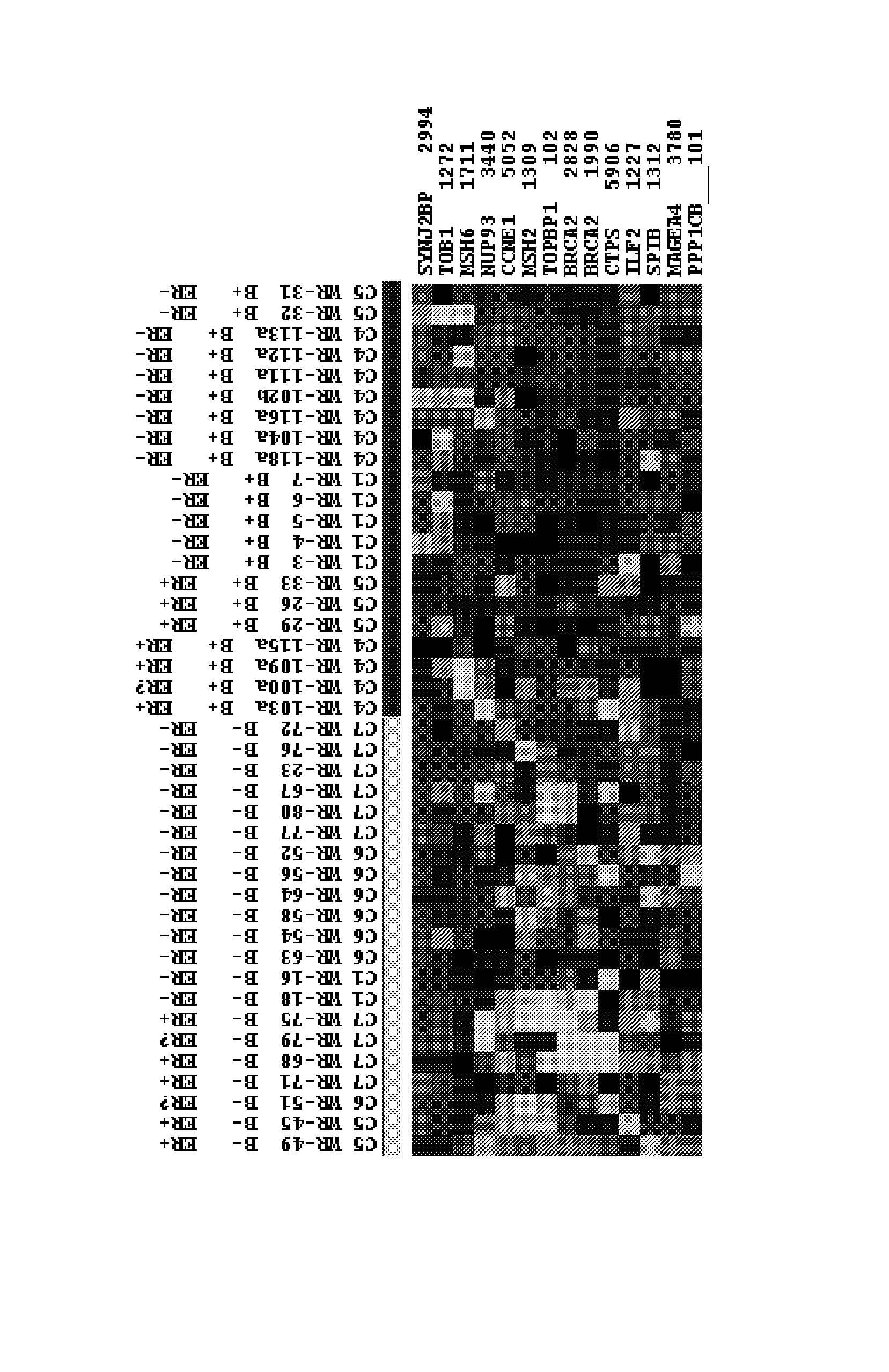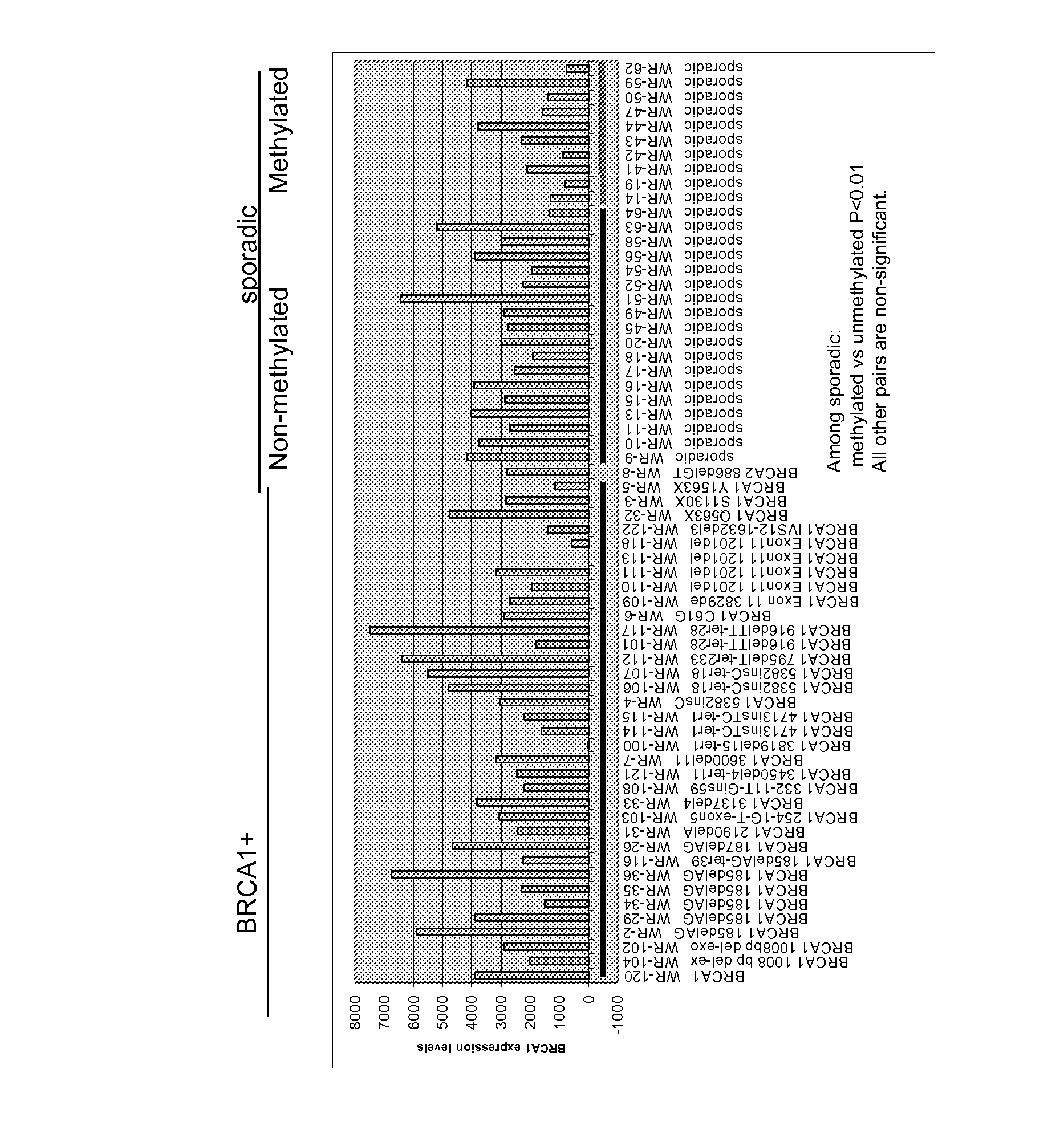Breast cancer profiles and methods of use thereof
a gene expression profile and breast cancer technology, applied in combinational chemistry, biochemistry apparatus and processes, library screening, etc., can solve the problems of degrading mrna samples in such ffpe tissues and may not be useful for conventional dna arrays, and achieve the effect of reducing the activity of brca1
- Summary
- Abstract
- Description
- Claims
- Application Information
AI Technical Summary
Benefits of technology
Problems solved by technology
Method used
Image
Examples
example 1
Samples and RNA Preparation
[0083]Formalin-fixed, paraffin embedded (FFPE) tissue blocks were retrieved from the pathology archives bank of Evanston Northwestern Healthcare (Evanston, Ill.), Department of Pathology in accordance with HIPAA and Institutional Review Board (IRB) guidelines. Total RNA was prepared from the FFPE breast tumor blocks using the High Pure RNA Paraffin Kit (Roche Applied Science, Indianapolis, Ind.). All chosen blocks contain more than 50% tumor. The relationship of RNA quality versus the age of the archival sample is illustrated in FIG. 4. As the data indicates, the age of the archival material is not predictive of sample quality. The oldest sample in the study (39 years) demonstrates one of the highest quality RNAs
example 2
Microarray Analysis and DASL™ RNA Pre-Qualification
[0084]RNA extractions were pre-qualified for the DASL™ assay by a real-time PCR assay recommended by Illumina Inc. (Illumina: Gene Expression on Sentrix Arrays: DASL Assay System Manual, Doc # 11175105 edn: Illumina Inc 2004). RNA (200 ng) was reverse-transcribed into cDNA using the Master Mix for cDNA synthesis, single use reagent (Illumina, San Diego, Calif.). The rtPCR reactions were performed on an ABI Prism 7900HT Real Time System (Applied Biosystems, Foster City, Calif.) using a Platinum® SYBR® Green qPCR superMix-UDG with Rox (Invitrogen, Carlsbad, Calif.) with the recommended PCR program and primers [1] to yield a 90 by transcript-specific fragment of the highly expressed RPL13a ribosomal protein gene (GenBank accession # NM—012423.2).
example 3
DASL™ Gene Expression
[0085]In the DASL™ assay total RNA is converted into cDNA using a reverse transcription reaction using random hexamers and is then labeled with biotinylated oligos (b(N)9 and b(T)18). Pairs of query oligonucleotides are annealed to complementary sequences (˜50 bases) flanking specified cDNA target sites. The biotinylated cDNA is then bound to streptadadivin particles and washed to eliminate mis and non-hybridized particles. A primer extension and ligation process then forms a biotinylated (˜100 bp) DASL product containing a unique address sequence for a specific gene. This product is then amplified using conditions detailed in [1] and two of three universal primers to produce a fluorescently labeled amplicon for hybridization. The two upstream primers are 5′ labeled with Cy3 and Cy 5 respectively while a downstream primer is biotinylated for capture and elution of the PCR product. The use of two dyes results in two separate measurements of a transcripts populati...
PUM
| Property | Measurement | Unit |
|---|---|---|
| time | aaaaa | aaaaa |
| reaction volumes | aaaaa | aaaaa |
| lifetime risk | aaaaa | aaaaa |
Abstract
Description
Claims
Application Information
 Login to View More
Login to View More - R&D
- Intellectual Property
- Life Sciences
- Materials
- Tech Scout
- Unparalleled Data Quality
- Higher Quality Content
- 60% Fewer Hallucinations
Browse by: Latest US Patents, China's latest patents, Technical Efficacy Thesaurus, Application Domain, Technology Topic, Popular Technical Reports.
© 2025 PatSnap. All rights reserved.Legal|Privacy policy|Modern Slavery Act Transparency Statement|Sitemap|About US| Contact US: help@patsnap.com



